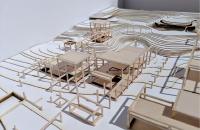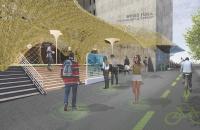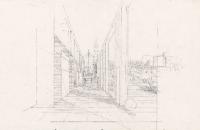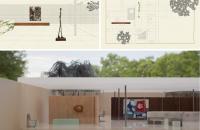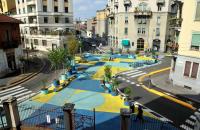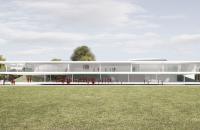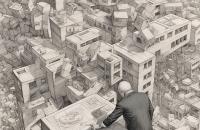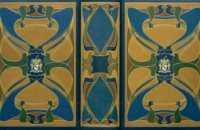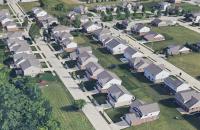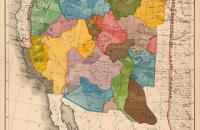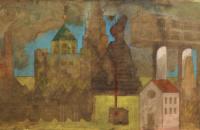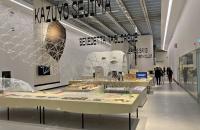Professor in Residence, Department of Architecture, GSD, Harvard University, Cambridge MA, USA
Dispersed Densification: A Solution to the London’s Housing Problem Using Small Sites
VOLUME 7/2022 - Issue 1 , Pages: 165 - 176 published: 2022-07-06To meet the demand for more housing in London today, there is great pressure to either rebuild existing housing estates at much higher densities, or to build on the Green Belt. Neither solution is desirable. But there is an alternative–here called dispersed densification on small sites. The 2017 Draft London Plan of the Greater London Authority presented proposals to make much greater use of small sites (less than 0.25 ha
[0.62 ac.]) to meet housing needs. But it had no architectural model, and so this was largely disallowed by Central Government. A willingness to build taller on such sites could, however, have demonstrated the viability of that option. Planning policies currently aim to cluster taller buildings together near transport hubs and peripheral centers. This effectively requires the difficult assembly of larger sites. A willingness to accept taller buildings on a dispersed pattern would allow much greater use of small sites. Such buildings would enjoy an open outlook above the lower-density housing and gardens around them, enjoying the conditions of sun, space, greenery to which the architectural Modern Movement aspired.
Re-Emergence of the Vernacular: The Material Aspirations and the Vanishing Continuum of the Immaterial
VOLUME 6/2021 - Issue 2 [The Good Material], Pages: 361 - 378 published: 2022-02-01The cultural elements drive the people’s way of life and ultimately influence their choice of the buildings they inhabit. Man, and his culture and his living environments are always correlated. While measuring heritage architecture, one tends to ignore the cultural and societal factors as the stakeholders. This isolated study can often paint half a picture of what a place was or could have been. An in-depth understanding of the “human element” will help appreciate the true “spirit of the place” despite the style, geometry, material, or construction method. While looking at a piece of craft, present-day perception focuses only on certain limited qualities such as visual or construction. Instant benefit has led to mass use of fabricated materials while ignoring any cautionary examination. Definition of any material’s sensual, social and symbolic worth often remains out of the scope for judgment. If these values are prioritized well, the architecture can continue to progress as a modest expression, adding a personality or realizing a life rather than producing alienating objects.
Ecologies of Leisure: Reimagined Architectures and Landscapes of Leisure and Infrastructure
VOLUME 6/2021 - Issue 1 , Pages: 197 - 218 published: 2021-06-14The research detailed in this paper revolves around an ecological and spatial exploration for a derelict coastal area in Lebanon. It frames the possibility for an agile ecological approach to design, one that builds upon the latent derelict aspects and persisting disconnections in this specific area and that reimagines a potential new reality intermeshing the natural with the human and the infrastructural with the architectural. Within the format of a research undergraduate studio, the approach and work discussed here present possible synthetic scenarios for coastal developments in Lebanon, and suggest alternative production, programmatic, and ecological strategies.
Open-Air-Space: Inclusive Involvement within a Public Health Crisis
VOLUME 5/2020 - Issue 2 [HEALTHY URBANISM], Pages: 365 - 384 published: 2021-01-13Since the eighteenth century, the healing arts have included open-air treatments, with the field hospital at the Royal Sea Bathing Infirmary near London being one of the earliest medical care facilities on record to successfully treat patients in this manner. Florence Nightingale began applying the principles of open-air treatment to architecture when she proposed an open-ward hospital design as a means to provide pure air to the sick. Her perspective would directly influence nineteenth- and early twentieth-century hospital design, which increasingly had to address the rising incidence of infectious diseases in cities. However, hospital design in the twentieth century began to rely on mechanically conditioned air rather than open-air spaces to provide filtered ventilation and reduce particulate contamination. In the twenty-first century, even as the world faces the public health crisis of the global COVID-19 pandemic, the Open-Air-Space Project conceptually revisits the open-air spaces of hospitals. The project basis is the “open plan,” whose structural origin is in part the Maison Dom-Ino system by Le Corbusier.
Musings on Boredom, Midcentury Architecture, and Public Spaces
VOLUME 5/2020 - Issue 1 , Pages: 119 - 138 published: 2020-06-11The rejection of “boredom” fueled the midcentury reaction against modernism, but little is known about the complicated presence of this mood in the architectural discourse. Far from being a mere rhetorical tool, the quip “Less is a bore” is part of Robert Venturi’s larger interest in boredom and was influenced by his reading of a book referenced repeatedly in Complexity and Contradiction in Architecture (1966): August Heckscher’s The Public Happiness (1962). A liberal writer and political activist, Heckscher situated boredom at the core of modern humanity’s alienation. While the concern with boredom was explicitly addressed in the humanities, I suggest that it was taking shape in midcentury architectural polemics under the influence of writings from other disciplines, as well as the emerging artistic practices that were deliberately embracing the “aesthetics of boredom.” Specifically, I will examine Venturi’s reading of Heckscher through two of his (unbuilt) civic projects that directly engage the issue of boredom: Three Buildings for a Town in Ohio (1965) and the entry for the Copley Square Competition (1966).
Bauhäusler and the Second Chicago School of Architecture: Enduring Student Exercises
VOLUME 6/2021 - Issue 1 , Pages: 219 - 241 published: 2021-06-09On March 28, 2019, on the occasion of Ludwig Mies van der Rohe’s 133rd birthday, the Illinois Institute of Technology’s Mies van der Rohe Society displayed an exhibition at S. R. Crown Hall entitled “Stories from the Archives” as part of the larger event theme of “Bauhaus Descendants” in the year of its centenary. The exhibition proposed connections between the Bauhaus and IIT’s school of architecture through a display of archival materials related to the work of the former Bauhäusler Ludwig Mies van der Rohe, Ludwig Hilberseimer, and Walter Peterhans who founded the modernist school at IIT. This paper provides a deeper investigation of the exhibit’s proposed connections and the relationship between the Bauhaus and IIT’s architecture school through the lens of three enduring student exercises: the court house problem, the planning sequence, and visual training exercises. Considering these three exercises in relation to the curriculum that was developed at IIT shines light on a philosophy of architectural education which started in Europe, matured in Chicago and continues to evolve into the future.
In Search of the New Eden. From Le Corbusier’s Boîte to Sejima’s Curtain
VOLUME 8/2023 - Issue 1 , Pages: 115 - 132 published: 2023-06-14Le Corbusier’s Unité d’Habitation in Marseille established the relationship between an old man and a new world that arrived. This old self found in the interior of a long rectangle a domestic Eden that was once lost. The exterior was still a place for waiting, a place to be seen, writes Beatriz Colomina. But this modern Eden could not last forever: his indoor paradise had to move. In 1999 Terence Riley inaugurated at the Museum of Modern Art of New York the Un-private House. In it, he discovers a new dweller that does not occupy the interior of that domestic laboratory, but its own limits. Contemporary man is a social being, Jose Pardo asserts. His public self is moved to a liminal threshold, writes Victor Turner, that Kazuyo Sejima turns into the new house. Architecture is no longer the air volume contained within its limits, but that which prowls said limits. The new domestic home of contemporaneity becomes a porosity line: a curtain that publicizes domestic life. The house is converted into a habitat of borders, where man discovers his new domestic Eden.
Surplus Land: How Architecture Can Transform Underutilized Public Properties into Affordable Housing
VOLUME 7/2022 - Issue 2 [The Right to Housing], Pages: 445 - 451 published: 2023-01-13As the cost of land becomes increasingly expensive, cities are posed to establish new ways of finding sites to encourage affordable housing and housing for people experiencing homelessness. Cities in California and across the US are looking to surplus land, or underutilized publicly owned land, as a resource to develop new housing. One of the obstacles with this effort is the inconsistency of the surplus land parcels. Challenges these sites might be facing can include a lack of zoning, contamination, and a lack of connection to residential or pedestrian-friendly zones. With surplus land presenting a viable option for developing new affordable housing, Architects will be a key component to reimaging these sites to contend with the challenges they face and to integrate this new land use into neighborhood contexts.
The Adaptive Island: Proving Ground for Temporal Awareness in the Anthropocene
VOLUME 7/2022 - Issue 1 , Pages: 177 - 196 published: 2022-06-17Peddocks Island is a 200-acre [80.9 ha] island which is part of The Boston Harbor Islands National Recreation Area (US). The island has limited public transportation and is rarely visited by humans. Its use and ecology has transformed throughout history and it is now positioned to transform again with climate change and rising sea levels. This article suggests that the island’s history, geology, mythology, and ecology situate it perfectly to experience climate change’s temporal and spatial impacts. Amitav Ghosh points out the need to communicate and narrate the uncertainty of the changing climate and build temporal awareness through narratives. In this work, we suggest the island as a “living lab,” available for both controlled observations and for the public to experience the realities of climate change. This article provides tangible and experiential concepts for Ghosh’s question by exploring mutable and ephemeral infrastructure design strategies
New Healthy Settlements Responding to Pandemic Outbreaks: Approaches from (and for) the Global City
VOLUME 5/2020 - Issue 2 [HEALTHY URBANISM], Pages: 385 - 406 published: 2021-01-12The essay critically addresses several solutions and strategies for tackling urban inequalities to uphold the recent “right to the ‘healthy’ city” spatial paradigm based on early social science works by Emily Skinner and Jeffrey R. Masuda (2013) and then developed as a urban planning component by the interdisciplinary research group Barcelona Lab for Urban Environmental Justice and Sustainability (2019). The authors propose a transdisciplinary approach in dealing with city renewal-regeneration and the safer use of its spaces. The interrelation between urbanism and architecture, including environmental design, mobility, and social relations, among others, would merge to imagine a more ecologically and socially balanced urban milieu. The paper analyses four specific case studies assumed as proper approaches in dealing with the pandemic, critically reflecting on the application of “Superblocks,” “Tactical Urbanism,” and “15-minute City” concepts by illustrating and comparing their application in three global cities (respectively Barcelona, Beijing, and Milan). In a nutshell, the authors demonstrate that these policies have their crucial feature in being effective applications formulated for different contexts, proposing successful strategies to overcome health, environment, and mobility issues in all the contemporary global cities.
A Lab for a New Civitas. An Innovative School in the Po Valley
VOLUME 5/2020 - Issue 1 , Pages: 139 - 162 published: 2020-06-17Sorbolo is a beautiful town located halfway between the ancient ducal city of Parma and the Po River, within a countryside that developed from marshes, rows of poplars, embankments, vineyards. In 2016, after an initial planning process, the municipality of Sorbolo submitted to the MIUR (Ministero dell’Istruzione, dell’Università, e della Ricerca) a plan for the development of a school campus. The facility was meant to be open to the local territory and community, parents, and citizens wishing to have a stake in the decision-making processes that apply to the education and training of young people.
The first step was the construction of a new building complex destined to a 24 hour school system, accomodating approximately 450 students, ten to fourteen years old, supported by a cross-disciplinary approach: “a school for everyone, motivational, open, innovative.” The firm UFFICIO PROGETTI Architetti Associati Bertani & Vezzali, with the Sorbolo project, was the second winner of the MIUR international contest for the creation of 52 innovative schools over the entire Italian territory.
The Meta-Project, Eisenman, and Capital: Lessons for Critical Architectural Practice
VOLUME 8/2023 - Issue 1 , Pages: 133 - 151 published: 2023-06-30How does Peter Eisenman’s conception of the meta-project relate to capital? Within much of the relevant discourse, the Eisenmanian ideal of achieving autonomy from politico-economic dynamics is underscored, with strict references to the notion of capital remaining absent from the literature. However in studying narratives articulated by Eisenman himself over the course of several lectures spanning several decades, a more integrated connection with capital begins to emerge—wherein Eisenman’s conception of capital not only shapes later stages of the meta-project evolution but even seems to partially shape the anti-phenomenological position, anchoring it in its formative stages. These findings offer a distinct counterpoint to the Eisenmanian meta-project, both in terms of its efficiency at achieving distance from politico-economic dynamics and, more fundamentally, in terms of its presumed apolitical anchoring. However, far from being solely applicable to a scholarly niche, these discursive wrinkles offer contemporary practitioners a proactive theoretical framework for how to structure meta-projects to better resist contemporary capitalistic intricacies, and avoid the paths which led Eisenman’s own meta-project being appropriated by dominant politico-economic dynamics.
Listening as a Methodology, Longevity as a Goal: London’s Tustin Estate Master Plan as a Case Study for Community-Led Design Development
VOLUME 7/2022 - Issue 2 [The Right to Housing], Pages: 453 - 476 published: 2023-01-13This essay explores the relationship between a group of design professionals, a community of residents, and a local council in the early stages of the Tustin Estate renewal project – a Master Plan and Phase One Regeneration for a south-east London post-war housing estate. In 2021, the estate’s residents voted in favor of demolishing and rebuilding its low-rise buildings in a residents’ ballot. This essay positions Tustin Estate’s engagement phase as a notable case study for community-led design, providing an overview of London’s introduction of resident ballots in estate development, leading onto the example of Tustin Estate’s ballot, which initiated its engagement strategy. Interviews with key members of the engagement process form the central research to this essay, which explores the role of ballots in estate regeneration; approaches to building authentic engagement; the importance of community ownership; and how listening enables knowledge transfer and creates a blueprint for longevity. The essay defines longevity as the culmination of design and build solutions based on principles drawn directly from residents’ needs, each of which being robust enough to avoid demolition for the long-term.
Urban Regeneration of Historic Italian Borghi after the Pandemic
VOLUME 7/2022 - Issue 1 , Pages: 197 - 216 published: 2022-06-07The advent of the pandemic has had a large impact on expectations about the way people live and work. The desire of many to live in situations of environmental health has stimulated proposals and actions aimed at revitalizing the life of Italian countryside villages (“borghi”). This article considers how architects and urban planners can help reverse the escape from borghi to cities, for a migration in the opposite direction, from cities to borghi. The analysis evaluates the opportunities given by smart working and distance learning, the forms of mobility such as the restoration of local railways and car-sharing policies, the restoration of abandoned buildings for new uses such as co-working spaces and “alberghi diffusi” (widespread hotels). Economic incentives to stimulate local agricultural products and artisan traditions are also considered. As an example, the article reports studies by the authors aimed at urban development interventions for historic villages based on the application of the “analog method,” that is design proposals inspired by the architectural qualities of existing borghi reinterpreted in forms and building technologies of a contemporary character.
Salt as a Building Material: Current Status and Future Opportunities
VOLUME 6/2021 - Issue 2 [The Good Material], Pages: 393 - 413 published: 2021-12-14Identifying materials that can substitute rare natural resources is one of the key challenges for improving resource efficiency in the building sector. With a growing world population and rising living standards, the amount of salt (sodium chloride) produced as waste through seawater desalination and potash mining processes is increasing. Unfortunately, most of it is disposed of into nature where it causes environmental pollution. On the other hand, salt is affordable and can be used therapeutically in various respiratory treatments and to store humidity and heat. It was, therefore, necessary to determine salt materials already in use in building construction. The aim of this research was to identify those that have been used in history and analyzed in scientific studies, to investigate their physical and mechanical properties, and to identify the most promising applications in the construction field. This was accomplished via literature review, classifying the salt materials into three groups (raw salt, composite salt, and processed salt). It was found that salt has been used as a building material for centuries and has potential for future applications.
The Contested Nature of Modernity: “Type and Individuality” in the Deutscher Werkbund
VOLUME 6/2021 - Issue 1 , Pages: 243 - 262 published: 2021-06-08The purpose of this paper is to contribute an inclusive insight into the debate of type (Typisierung) and individuality in the Deutscher Werkbund. The debate is widely discussed on the dichotomy between art and industry in the historiography of modern architecture. This paper aims to show that both camps of the debate wanted to constitute the synthesis of art and industry, but the methods that they used were different. This paper considers the debate as a referent of the contested nature of modernity. Modernity oscillates between the desire to give the modern world new modes of structure, order, regulation and to accept modernity with all complexities. This article claims that while the notion of type represents the former one, the notion of individuality represents the later one in the realm of architecture. This article unveiled the control mechanisms in the discourses of defenders of Typisierung. It found the concepts norm, organization, system, standardization, which were the reflections of the Enlightenment. On the other hand, it pointed out the reactions of the individualists against these discourses.
(sub)URBAN Hybrid Housing: Rethinking the City with Healthy, Sustainable Housing
VOLUME 5/2020 - Issue 2 [HEALTHY URBANISM], Pages: 407 - 424 published: 2020-11-23City dwellers have historically fled to the countryside to escape disease but returned when it was safe. US cities have experienced growth for decades, but that trend is slowing and, in some cases, reversing. Increasingly, millennials are leaving cities for the suburbs to combat escalating housing costs and lack of family-friendly amenities, and the current pandemic has sped up that rate of exodus. Urban dwelling is a very sustainable lifestyle, so how can we provide healthier and more sustainable qualities of suburban living in the city to entice people to return and/or stay? This research/design project, proposed to fill large vacant blocks in cities, produced a (sub)Urban hybrid housing model that combines qualities of suburban housing with the benefits of urban dwelling. The resulting design, based on the Charleston house typology arranged in a checkerboard pattern, provides a south-facing side yard with access from most rooms to sunlight, fresh air, shade, photovoltaic panels and a private, green, social distancing space not found in the common urban row home typology.
Waving the Magic Wand: An Argument for Reorganizing the Aridlands around Watersheds
VOLUME 5/2020 - Issue 1 , Pages: 163 - 184 published: 2020-05-21Irrigation remains the primary means of sustaining urbanization and stabilizing agricultural productivity in arid America. In the contest for the West, water is both wealth and power. Today’s struggle to overturn water scarcity is traceable through a long history of legislation overseeing land regulation, property speculation, societal development, and cultural attitudes, real and perceived, inscribed within the America’s aridlands. In reality, there is no magic wand - no miraculous technology - that alone will fulfill the needs of all who have been promised abundance in the aridlands. This paper proposes that revisiting John Wesley Powell’s 1893 proposal for aridland development in the context of today’s ecological conditions catalyzes an alternative response to today’s predictions of changing climates, and can provide the basis of an approach to the aridlands which builds from the enmeshed relationship between social and environmental systems.
"Modern and Site Specific: The Architecture of Gino Valle 1945-2003"
VOLUME 4/2019 - Issue 1 , Pages: 223 - 226 published: 2019-07-16
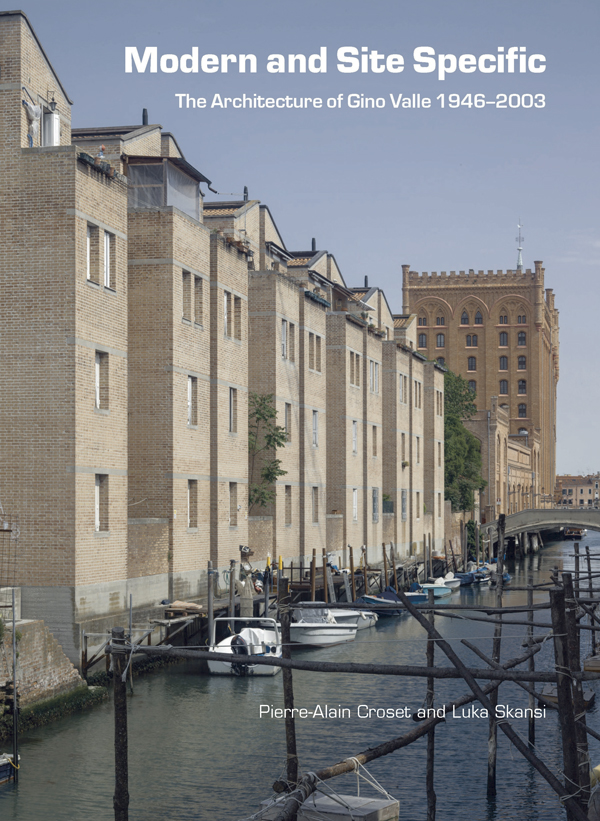
Modern and Site Specific:
The Architecture of Gino Valle 1945-2003
By Pierre-Alain Croset and Luka Skansi
London: Lund Humphries, 2018
250 × 190 mm
100 b/w and 150 color illustrations
352 pages
£50.00 GBP (hardcover)
ISBN: 978-1848222779
To Think a New Thing: AI, Metaphor, and the Fantasies of Knowing
VOLUME 8/2023 - Issue 2 , Pages: 303 - 315 published: 2023-12-01This essay aims to explore the unexpected intersection of AI-generated images, metaphor, and fantasies of knowledge. Expanding on the notions of metaphor in the philosophy of Jose Ortega y Gasset, we view the AI-generated images (such as those from mis-trained StyleGAN models) as ‘objects’ in possession of an inherent surplus that transcends their perceived qualities and constituent parts. Metaphors reveal latent qualities of ‘objects’ that extend beyond human perception. We consider how these image-objects operate not merely as generators of visual metaphors but as metaphor-like entities themselves, shifting our perception of reality. As a result, these image-objects behave like disembodied expressions of a new kind of knowledge. This feeling, or fantasy of knowledge, is what Steven Connor calls ‘epistemopathy.’ By examining the interplay between human imagination, AI-generated outputs, and the epistemopathic experiences they evoke, we explore how AI becomes a manifestation of the human desire for expanded knowledge and imaginative exploration. In the blurring of the boundaries between our own understanding and AI’s perplexing output, we are confronted with a sort of knowledge boundary that conflates reverie with reasoning.
Three Aspects of Nostalgia: Thoughts on the Work of Aldo Rossi
VOLUME 8/2023 - Issue 1 , Pages: 153 - 175 published: 2023-07-12This essay discusses various aspects of the term “nostalgia.” Rather than an individual plight, it will be considered here as a symptom of contemporary society, which does not stand in contrast to modernity but is derived from it. Nostalgia characterizes humans’ connections to the past, to their sense of self, home and community. We reflect on how this affects our longing for home, how we envision our collective home, and how we place ourselves in the world. We distinguish three types of nostalgia: Restorative, longing for the restoration of a lost home; Utopian, transforming our longing into a utopian ideal; and Reflective, which differs by shifting the focus from recovering what is perceived as a loss of absolute truth to pondering questions of history and the passing of time. The essay focuses on nostalgia’s bearing on architecture, as demonstrated in the work of Architect Aldo Rossi. His oeuvre, in which the contemplation of time and memory are inherent, reveals all three forms of nostalgia, highlighting and questioning their centrality to architectural thought and practice.
Five Esthetics of the Global Development Industry: Building Low-Cost Housing in Rwanda
VOLUME 7/2022 - Issue 2 [The Right to Housing], Pages: 477 - 502 published: 2023-01-25This paper argued that, in parallel to financial feasibility, the esthetics play a powerful role in swaying the donation and investments away from low-cost housing projects in the development context. The paper analyzes the development industry’s structure and its players and asks how architects could ally with the End Users by understanding their self-building practices. The architect in the global development industry works with at least five clients. They are the Funders (often from the global North), the Local Government (often in the global South), the Architectural Disciplines in the funder nations, the Local Building Sector, and the End Users. Our survey of 370 self-build homes in Rwanda attests that not all actors represent their values equally, and the End Users, the actor with little resource and leverage, may be rendered silent in this process although they have the most at stake. While the global development industry tries to eradicate self-building activities, the End Users continue to claim the built environment by tapping into their social capital, and share labor, materials, and knowledge. Their architecture simultaneously protests and participates in development.
Stories of Women Architects Who Made Their Mark
VOLUME 7/2022 - Issue 1 , Pages: 219 - 230 published: 2022-07-06Silver Tower. Bio-Engineered Matter with Silver Skin
VOLUME 6/2021 - Issue 2 [The Good Material], Pages: 379 - 392 published: 2022-01-13SILVER TOWER | Bio-Engineered MATTER with Silver Skin project is awareness of global warming and embracing the emergence of the new order of unifying design, science and nature to initiate a dialogue of amplifying the knowledge of architecture. All flora and fauna on this planet need to be understood as partners in the Spaceship Earth. This is the future of architectural practice that encourages and disseminates the vision of the world where every living matter is valued and embraced because of its invisible interrelationship it carries through its cellular level. The research into new organic living material and growth medium is the necessary structures to sustain and expanding the lexicon of performative skins, negotiating adverse environmental conditions. This architectural experimentation demonstrates the interdisciplinary research embedded in technical and design issues that are transferrable to real-world applications. Nature informs design at the molecular level, connecting ecosystems for a healthy and beautiful future.
Modern Architecture and Climate
VOLUME 6/2021 - Issue 1 , Pages: 265 - 270 published: 2021-05-07
Modern Architecture and Climate: Design before Air Conditioning
By Daniel A. Barber
Princeton University Press, 2020
8 in. x 10.5 in. [203 mm x 267 mm]
76 color + 196 b/w illustrations
336 pages
$60.00 / £50.00 (hardcover)
ISBN: 978-0-691-17003-9



